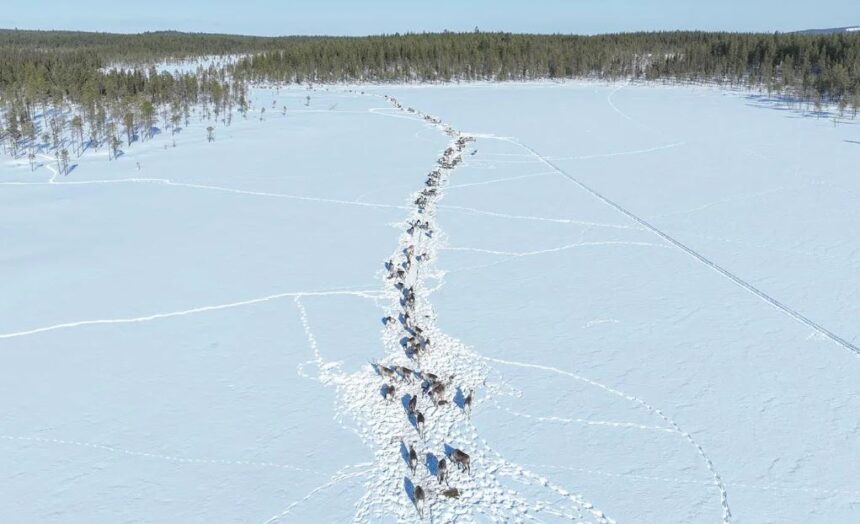Sweden: Siltanews – News Desk
The Sami people, one of Europe’s last Indigenous populations, have inhabited northern Sweden for thousands of years, maintaining a unique way of life that is intertwined with their territory and with reindeer herding. Reindeer are a cornerstone of Sami life and economic subsistence and also serve as a living connection to Sami traditions and cultural identity.
Though Sweden did not engage in overseas colonization to the same extent as other European countries, it did look to the north to extract resources. Vast reserves of minerals, wood, and water in the north of Sweden helped the country become one of the richest in the world.
These resources are mainly located on Sami land, which has increasingly come under threat from green-energy projects, including wind farms, mining expansions for rare-earth minerals, and forestry. These projects obstruct migration routes, fragment pastures, and shrink reindeer grazing lands—disrupting the ecosystem’s delicate balance and Sami activities. Forced displacement becomes a tradeoff for innovative climate-change mitigation.
The Sami have a long-standing spiritual connection with their land, making their living through reindeer herding, deer hunting, fishing, and farming. The reindeer provide the Sami with what they need to survive in a harsh environment; the herders rely on vast grazing lands and migration routes between summer and winter pastures that have passed through generations.
However, modern reindeer herders struggle to uphold their ancestral responsibility to steward the land due to extensive exploitation. Unlike neighboring Norway, Sweden never ratified the International Labour Organization’s Indigenous and Tribal Peoples Convention of 1989, which protects the rights of Indigenous and tribal peoples. In 2020, the U.N. Committee on the Elimination of Racial Discrimination concluded that Swedish law discriminates against the Sami.
Despite this, the Swedish government continues to prioritize green-energy projects on Sami land. These projects often involve state-owned companies, private contractors, and multinational corporations, reflecting a push toward energy resilience at the expense of Indigenous rights. The Sami use the term “green colonialism” to describe these hegemonic sustainable policies, connecting colonial resource exploitation with the current dispossession carried out to advance the green transition.
Wind farms, for example, reduce grazing land for traditional reindeer herding because the noise and movement of the turbines disturbs reindeer. Building up hydropower has required the construction of numerous dams and reservoirs, mostly located on Sami land that altered natural water courses essential for traditional fishing practices and also flooded large areas, resulting in further loss of grazing land. This has displaced some Sami households toward urban centers, disrupting their way of life.
Timber plays a central role in green policies, from sustainable construction to biomass and biofuels; it can replace non-renewable materials such as steel, concrete, and aluminum. However, commercial forestry decreases biodiversity and the availability of grazing land. In Sweden, extensive logging has led to the loss of lichen, a crucial source of nutrition for reindeer.
Logging companies have also been criticized for not respecting Indigenous rights: Protesters have targeted the Swedish state-owned forestry company Sveaskog, which has been clear-cutting forests on Sami land.
Mining operations further compound the issue. Nine of the 12 mines in northern Sweden are located on Sami territory, including one of the European Union’s largest copper mines, the Aitik mine outside the town of Gallivare; and the world’s largest iron ore mine in Kiruna. The town of Kiruna is being dismantled and relocated several miles eastward amid expansion of the mine; this will displace both urban and Sami communities.

